
It’s wintertime in the Northern hemisphere, and that means we’re heating our homes. The new year started off a bit on the warm side here in the Atlanta area, with the temperature at nearly 70°F (21°C). In terms of heating degree days (HDD), we began with a mere 2.5 HDD on New Year’s Day and hit 30+ HDD/day only twice in January. Our total for the month was 616 HDD, below our average of 692 HDD for the previous 11 Januarys, so it’s another down year for heating degree days here, despite the Polar Vortex.
Still, with temperatures here dropping into the low 20s Fahrenheit some nights, we’ve had plenty of demand for heating in the Atlanta area. And nearly all of that heating has come from one of these three sources.
Combustion
This one’s common in many places that do significant heating. It’s the furnace that extracts the heat from burning natural gas or propane, the boiler burning natural gas or fuel oil, and woodstoves burning wood. Fuels like natural gas (which is mostly methane), propane, fuel oil, and wood contain chemical energy. The process of combustion releases that energy in the form of heat. Then the heat is distributed through the living space with air ducts and hydronic tubes.
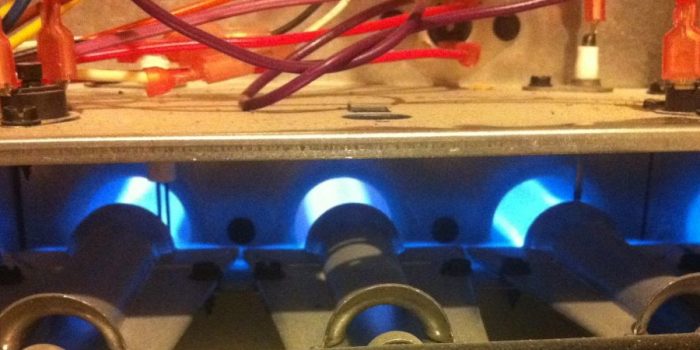
If you’re a clever person, though, you may be thinking to yourself, “Hold on a minute, Allison. What about unvented space heaters or ventless gas fireplaces inside the living space?” Every BTU of heat stays in the home as there’s no flue to carry away the exhaust gases. Right? Not so fast. Actually, a 96% efficient condensing furnace is more efficient than a ventless gas fireplace. The key to understanding that lies in the water vapor created during the chemical reaction of combustion. See my article on the topic for more detail.
But let’s also remember that unvented space heaters of any kind, including ventless gas fireplaces, are a bad idea. Pretty much anyone who understands indoor air quality will tell you they can be a problem even when operating properly because of the water vapor and nitrogen dioxide created, not to mention the possibility of carbon monoxide when they’re not operating properly.
In the type of combustion system that has a flue for the exhaust gases, you’ll always lose some heat to the outdoors and thus your efficiency will be less than 100%. The best furnaces and boilers these days are up in the high 90s, though, so you can capture most of that heat. But that doesn’t count what you might lose in distributing that heat if your air ducts or hydronic tubes are not completely in conditioned space.
Electric resistance
Another way to get heat is to move electricity through a type of conductor that has a high electrical resistance. That converts the electricity to heat… and it does so at 100% efficiency. Don’t get too excited about that, though, because the third method below gets more than 100%.

Sometimes that electric resistance heat in a system malfunctions, too. The worst is when it comes on while your air conditioner is running in summer. Not only will your bills be way too high but you may have trouble cooling the house.
By the way, the dog in the lead photo of this article is sitting in front of an “Amish fireplace,” which is nothing more than a glorified strip heater with a blower.
Outdoor air, ground, or water
The best way to heat your home is by capturing heat from the outdoor air, ground, or water. (Yes, I do have an opinion.) You may be thinking, how the heck can you get heat from cold outdoor air? Great question! It’s basic physics.
The second law of thermodynamics says that heat flows from warmer objects to cooler objects. If you want to wring heat out of air that’s 20° F, say, you need to have something colder than 20° F in contact with the air. And that’s what heat pumps do.
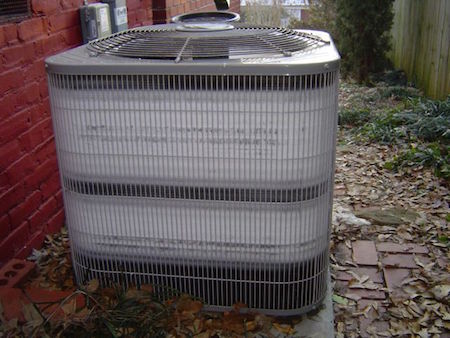
Heat pumps do have the drawback of their heating capacity going down as the temperature goes down, and that’s what you need supplemental heat for. As mentioned above, electric resistance is often used as the supplemental heat source in heat pumps but it’s not your only option. A hydronic coil connected to the water heater can be a really good way to provide that extra heat you need on the cold nights.
Also, the technology now is much better than it was in decades past. Inverter-driven mini-split heat pumps can provide their full heating capacity down to the single digits Fahrenheit. We’ve got Mitsubishi mini-split heat pumps in our office in Decatur, Georgia, and they’ve been great, even on those days where the temperature has dipped into the 20s. (Disclosure: Mitsubishi is an advertiser in the Energy Vanguard blog.)
Another three sources of heat, on a larger scale
I wrote that part above about the three main sources of heat in an article a couple of weeks ago and had to follow it up with another article. That’s because my Idahoan friend Skylar Swinford pointed out on Twitter that in high-performance homes the above three can be grouped together as one of three other sources of heating.
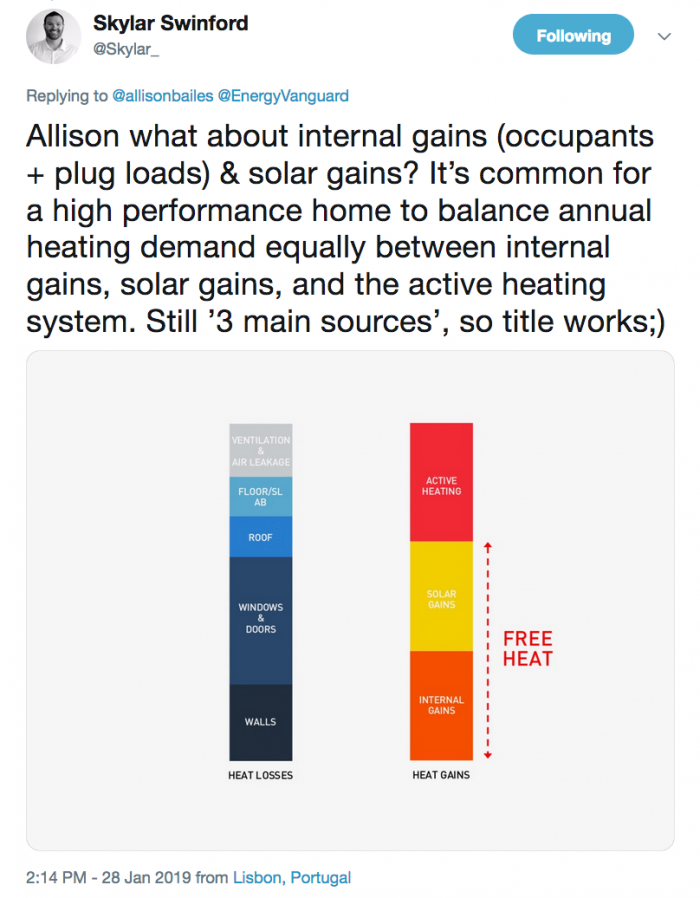
Skylar spends his days modeling Passive House projects and in that world, where you go above and beyond with the building enclosure, internal and solar gains are definitely more of a factor. Solar gains still have the problem of occurring during the day whereas peak heating loads normally happen in the dark of night, and they can cause problems with overheating if the designer isn’t careful. But internal gains are there for you through the night.
The diagram he posted above isn’t from a real house, though. Typically, Passive House projects still get more than half of their heat from the active heating source, which would be one of the three I discussed in the other article. Just to spell it out for the people looking for the list here, the three heating sources for high-performance homes are:
- Active heating
- Internal gains
- Solar gains
This discussion has reminded me of reading Amory Lovins discuss the high-performance home he built in Snowmass, Colorado way back in 1984. I don’t remember which book it was but somewhere he wrote about welcoming people — and their 120 watts* of heat — to his home. As you build a house that’s really good at not losing heat, those internal gains become more and more significant.
Two notes about solar heating
First, high-performance homes indeed can get more of their heat from solar energy. But what seems to be happening more and more often is that superinsulated homes end up overheating because of solar gains. Once you improve the building enclosure with more insulation and really good airtightness, heat from internal gains and active heating sources stays inside. On a sunny day, the extra heat coming through the windows can then be too much.
Second, back in the ’70s, solar heating was really a thing. Here’s a cool solar home built in the early ’70s by architect Richard Levine, and which he still lives in. I got to visit him there a few years ago and I can tell you, it’s quite the spectacle.
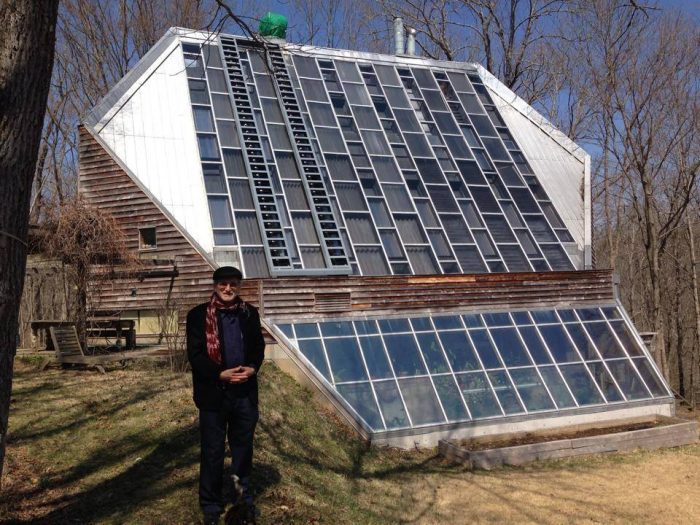
But focusing a building’s design on capturing solar radiation for heat turned out to be mostly a deadend. As Martin Holladay has shown, superinsulation won the battle between more windows or more insulation. Now we know it’s better to use that solar radiation to make electricity.
In the end, if you’re wondering where the heat in your home comes from, it’s almost certainly one of the three active sources: combustion, electric resistance, or the outdoor air, ground, or water. If you live in a high-performance home, you may get a significant portion of your heat from internal gains or solar energy, but the active heating source is still likely to provide more than half of your heat.
* I don’t recall exactly what number he used. It may have been 150 W.
Allison Bailes of Decatur, Georgia, is a speaker, writer, building science consultant, and the author of the Energy Vanguard Blog. You can follow him on Twitter at @EnergyVanguard.
Weekly Newsletter
Get building science and energy efficiency advice, plus special offers, in your inbox.





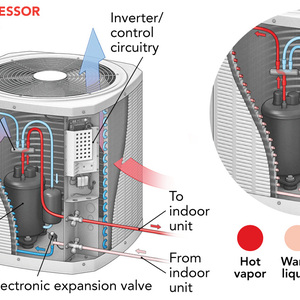
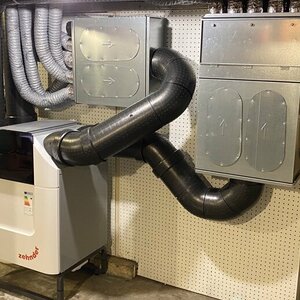








0 Comments
Log in or create an account to post a comment.
Sign up Log in